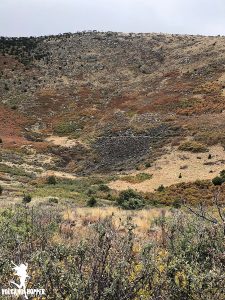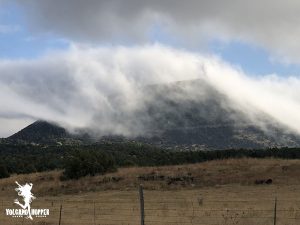The View From Mount St. Helens’ Summit
This year marks the 40th anniversary of the May 18, 1980 eruption at Mount St. Helens. Just a few months shy of the anniversary, we climbed the volcano to check out the views from Mount St. Helens’ summit. We could clearly see and smell the steaming lava dome, witnessed rockfalls…
Capulin: The Summit

VITAL STATS
Name: Capulin
Type: Cinder Cone
Eruption Status: Extinct
Last Eruption: Approximately 60,000 years ago
Location: 36.7811° N, 103.9695° W
Northeastern New Mexico; Raton-Clayton Volcanic Field
The clouds that enshrouded Capulin’s cone finally began to break around mid-morning. We raced to the summit to see what had been hidden behind the thick mist all morning. What we found was breathtaking.
Capulin’s summit crater is perched over 1,300 feet above the surrounding plains, and the drive to reach it is nothing short of intimidating. If you’re not driving, take a peek out the passenger side window. There are no guardrails and the view is straight down. This cone has virtually no slope. Not intimidating…not at all…
Capulin Volcano

Vital Stats
Name: Capulin
Type: Cinder Cone
Eruption Status: Extinct
Last Eruption: Approximately 60,000 years ago
Location: 36.7811° N, 103.9695° W
Northeastern New Mexico; Raton-Clayton Volcanic Field
The drive east through Northern New Mexico can be a pretty boring one. The landscape is flat and brown, minus a few hills popping up here and there. Major yawn factor – until you see the unmistakable cone of a volcano standing majestically next to the highway. And then you realize exactly what you’re driving through.
The Raton-Clayton Volcanic Field stretches from southern Colorado to the western border of Oklahoma and Texas, near the town of Clayton, NM. This volcanic field is a bit of an anomoly in the volcano world. Most volcanoes form on hot spots (like Hawaii) or along plate boundaries (Cascade Range). New Mexico doesn’t sit on either one. However, a continental rift does run though the area where the land is pulling apart and much thinner than the surrounding crust. This is what allowed magma to rise to the surface, creating some spectacular volcanic activity.

